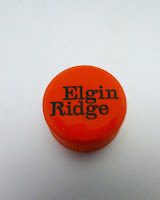Review: The Whiskeys of Ireland
by Peter Mulryan
 |
| Midleton |
“Whiskey. Irish for droplets of pure pleasure.” WB Yeats.
You’ll find tour guides in the many new Irish distilleries telling you that whiskey is a corruption of the Gaelic Uisce Beatha (water of life). No need to believe those novices! Yeats got it right and his interpretation is quoted on the back cover of the Whiskeys of Ireland by Peter Mulryan.
Whenever I get my hands on a new Irish food or drink book, I usually flick through the opening pages to see where it was printed and am invariably disappointed. This, printed in the Czech Republic, is no exception. If we are expected to support the Irish food and drinks industry, then our food and drink writers should do all they can to support Irish printers. But that's about the only gripe (one more - there is no index), I have against this excellent book.
 |
| The new Connacht Distillery in Ballina |
Because, for a long time, there were spirits galore but no definition of whiskey, Mulryan says it is difficult to trace its evolution. But distilling was alive and well, if not up to FSAI standards, in the 15th century and the Crown passed a law in 1556, in vain, to put a stop to it. Eventually, after the collapse of the Gaelic order, a licensing system was imposed.
The first Irish patent was granted in 1608 but cronyism and corruption led to the collapse of the system. Taxation reared its head in 1661 and that reinforced the illegal side of the trade. And the same happened when a stiff tax regime was imposed in 1779. The underground operators sold their poitín and that became “the drink of the people”.
A more benign tax regime led to a booming whiskey industry in the 1820s and onwards. But that led to widespread alcohol problems and in stepped Fr Matthew. Distilleries closed by the dozen.
 |
| On display in Teelings, Newmarket, Dublin |
The respectable side of the business examined the newly invented Aeneas Coffey column still and he had some initial success here before turning to a warmer welcome in Scotland. Ireland, pants down in Mulryan’s phrase, missed the revolution and would pay dearly.
Close to the end of the century though, the big players in Irish whiskey, including Allman’s in Bandon, were flying high again. Phylloxera dealt the French distillers a hammer blow and that too helped the Irish in what Mulryan terms “the Golden Years”.
Scotland too was on the rise but the bubble would burst as the century turned, fraudulent trading, recession, wars, and increased taxes all contributing.
 |
| With the author (left) in his Blackwater Distillery |
Ireland now had its own problems: wars and then partition. We were behind internationally and now the domestic market collapsed. And, in the US, prohibition was looming. Closure followed closure.
There were back doors to the US market. The Scots didn't hesitate, the Irish did. Then we Irish had the “Economic War” with England and next came WW2. After they were over, in the US, the Scots were in and, except for Irish Coffee, the Irish were out.
It was a long tailspin, halted only in 1966 when the three (yes, 3!) remaining distilleries amalgamated. Eventually a new outlook led to a new distillery in Midleton (1975). John Jameson was the brand that led to the current revival, the brand that eventual and current owners Pernod Ricard used as a wedge to once more open the international market to Irish Whiskey.
 |
| Cyril (left) and Barry of St Patrick's in Cork |
Meanwhile, Mulryan relates that an opportunity was spotted by John Teeling at Cooley and, thanks to the eagle-eyed entrepreneur, the Irish industry acquired a new and vibrant arm, an arm that is still reaching out. Now virtually every county has a distillery, many of them micro. The consumer, home and abroad, has never had it so good. Cheers to John Jameson (5 million cases in 2015) and the French marketeers.
Those marketeers include a salesman selling Jameson in a Vendeé supermarket sometime in the 90s. He was an insistent guy and I bought a bottle (the price was good too!) and I still have the free cassette tapes that came with it!
Mulryan's fascinating book covers the history, the rises and the falls and the stunning re-birth, in a lively manner, great for the experienced and novice alike. It is well worth seeking out for the history alone. But he also casts his keen and experienced eye (he founded and runs the Blackwater Distillery) over the current scene (sending out a warning to mid-sized operators).
 |
| Whiskey by Hyde's |
The closing chapters take us, in plain and engaging English, through the making and blending and, most importantly, the tasting of our beloved Uisce Beatha, sorry droplets of pure pleasure. Slainte!
 |
| Hands on research in Dingle recently |
























